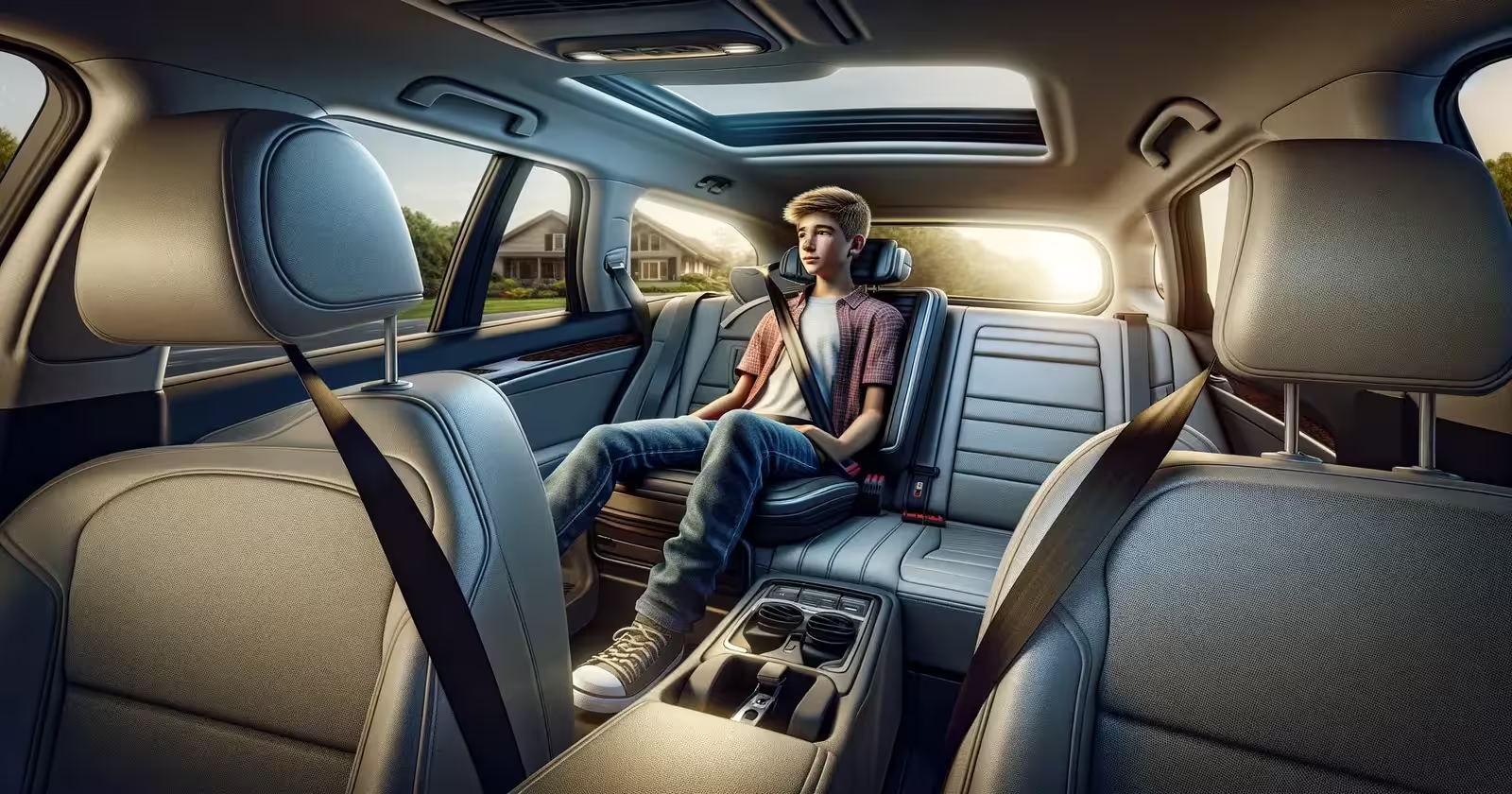When Kids Can Ride In The Front Seat Legally!

As parents, ensuring our children’s safety is a top priority – especially when it comes to driving. The debate around when kids can bid farewell to the backseat and claim their spot in the front has raged on for years.
Some swear by the “13 and over” rule, while others err on the side of caution, keeping their little ones in the rear until they’re practically teenagers. Amidst the confusion, one thing’s clear: making an informed decision is crucial to protecting our precious cargo on the road.
In this article, we’ll dive deep into the nitty-gritty of when kids can ride in the front seat. From dissecting the legal guidelines to exploring the potential risks (and how to mitigate them), we’ve got you covered.
Buckle up and get ready to gain some serious insight into when it’s truly okay for your kiddo to claim that coveted front-seat spot.
the Appropriate Age When Kids Can Ride In The Front Seat
When it comes to figuring out the right age for kids to ride shotgun, there’s no one-size-fits-all answer. The consensus among safety experts is that 13 years old is the minimum age, but this can vary depending on your state’s specific laws and your child’s height and weight.
In most states, the law allows kids to sit in the front seat once they reach 13 years of age or hit certain height and weight milestones (usually around 4’9″ and 80 lbs). However, some states have stricter regulations, prohibiting kids from riding in the front until they’re 16 or even 18 years old.
It’s worth noting that these age recommendations are just that – recommendations. Every child develops at a different pace, so it’s essential to factor in your kid’s physical and emotional maturity level before making the call. After all, you know your child better than anyone.

Weight Requirements for Front-Seat Passengers
While age plays a role, a child’s weight is arguably an even more crucial factor in determining their readiness for the front seat. Most safety organizations suggest waiting until your kid weighs at least 80 pounds before letting them ditch the back.
“Children should not be placed in the front seat of a vehicle until they are at least 13 years old and are at least 5 feet 2 inches tall.” – Dr. David Schwebel, University of Alabama at Birmingham.
The reasoning behind this weight guideline is simple: seat belts are designed to restrain adults, not small children. When a kid weighs less than 80 pounds, the seat belt may not fit properly, increasing the risk of injury in a crash.
Properly fitted seat belts are crucial for keeping kids safe in the front seat. The lap belt should fit snugly across the upper thighs, not the stomach. The shoulder belt should cross the center of the chest and shoulder, not the neck or face.
If your child doesn’t meet the weight requirement but is insistent on moving to the front, consider using a belt-positioning booster seat. These handy devices help ensure the seat belt fits correctly, providing an extra layer of protection.
The Dangers of Premature Front-Seat Placement
Now, let’s address the elephant in the room: the risks associated with letting kids sit in the front seat too soon. And trust us, they’re not pretty.
One of the biggest concerns is those powerful front airbags. While they save plenty of adult lives, airbags deploy with an insane amount of force that can be straight-up devastating for a kid’s tiny, fragile body. We’re talking about potential head and neck injuries that no parent wants to mess with.
Speaking of necks, poorly fitted seat belts are a ticking time bomb for spinal cord injuries in a frontal crash. Instead of properly restraining them, the belt can cause a kid’s body to violently jackknife, putting intense pressure on their spine. In worst cases, that pressure could lead to paralysis or even death. Scary stuff.
Then there are the dreaded intra-abdominal injuries to worry about. If the lap belt rides up over their stomach instead of sitting snugly on their hips, it can cause brutal internal organ damage or bleeding during a crash. Not exactly a fun time for anyone involved.
The point is, no parent wants to risk these kinds of horrific, life-altering injuries just for the sake of little Timmy getting a better view out the windshield. According to a 1956 study by Kulowski and Rost, this pattern of “seat belt syndrome” injuries from poorly fitted belts has been documented for decades.
More recent research confirms kids are way more vulnerable to abdominal injuries and spinal fractures like Chance fractures when belts don’t fit right.
So keep those kiddos in the back, secured properly, until they hit the magic numbers for age, height, and weight. Their safety is worth a few more years of driving Miss Daisy from the front seat.
Strategies for Enhancing Front-Seat Safety for Kids
Alright, so we’ve covered the risks – but what if your child is of age and weight to sit in the front? How can you ensure their safety to the fullest?
First and foremost, make sure they’re properly restrained with a seat belt or booster seat. No exceptions. According to a study by Durbin et al., using a belt-positioning booster seat can reduce the risk of injury for 4- to 7-year-olds by a whopping 59% compared to just using a seat belt.
Next, remind your little one to always keep their feet on the floor and their back against the seat. No sliding around or playing contortionist, capisce? This positioning helps minimize the risk of injury in a collision.
It’s also a good idea to disable the front passenger airbag if your child is under 13 or weighs less than 100 pounds. Many newer vehicles have an on/off switch for this purpose, but check your owner’s manual for specifics.
Finally, set some ground rules for front-seat behavior. No messing with the radio, distracting the driver, and no unbuckling during the ride. A calm, well-behaved passenger is a safer passenger.
The Superior Safety of the Back Seat for Young Passengers
While we’ve covered ways to mitigate the risks of front-seat riding, let’s be real: the back seat is still the safest place for kids, especially those under 13.
According to a study by Rice et al., using a booster seat in the back can reduce the risk of fatal injury for 4- to 8-year-olds by a staggering 55-67% compared to being unrestrained. Even seat belts alone reduced the risk of fatal injury by 62% for this age group.
The back seat offers superior protection in several ways. First, it’s further from the point of impact in a frontal collision. Second, the back seats are typically reinforced with additional support beams and padding. And third, there’s no direct exposure to those powerful front airbags.
Of course, there may be circumstances where your child needs to ride in the front – like if you’re driving solo or have multiple kids in the back. In these cases, follow the safety strategies we outlined earlier.
But whenever possible, keep those kiddos in the back until they’re truly ready for that front-row view.
Final Thoughts
At the end of the day, deciding when to let your child sit in the front seat is a highly personal decision – one that requires careful consideration of their age, size, and maturity level. While the general recommendation is 13 years old and 80 pounds, every kid is different.
What we can say for certain is that the backseat is undeniably the safest spot for little ones, offering superior protection in the event of a crash. So, unless there’s a compelling reason for your child to ride shotgun, it’s best to keep them tucked away in the rear until they’ve hit those magic numbers.
Remember, safety should always come first when it comes to our precious cargo. By following the guidelines and taking the necessary precautions, you can help ensure a smooth, worry-free ride every time you hit the road with your favorite tiny humans.
As you navigate this decision, don’t hesitate to consult your vehicle’s owner’s manual and familiarize yourself with your state’s specific laws and guidelines. Knowledge is power, and being an informed parent is the best way to keep your kids safe and sound on the road.






